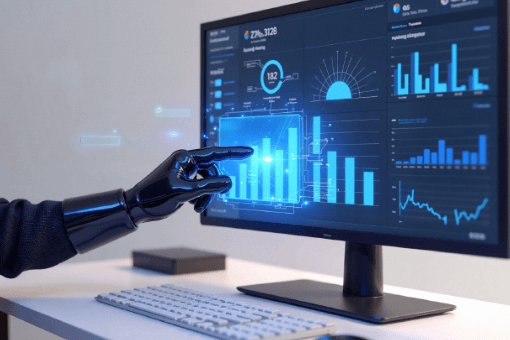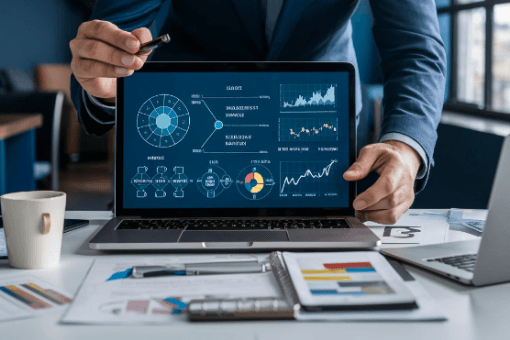Power BI Report Server is a comprehensive solution for on-premise installations. It allows businesses to host and handle Business Intelligence (BI), such as Power BI Reports, paginated reports, and Excel workbooks. Organizations, for various reasons, like compliance, security, or governance, must keep their data and analytics local in a secure, scalable, and customizable environment while delivering excellent reporting capabilities.
The Power BI Report Server has been designed to meet these needs with the help of seamless integration with other Microsoft products and enterprise systems. Transitioning organizations to the cloud has become better because it can be used in a hybrid or on-premises environment.
So let’s understand Power BI Report Server in depth..

Table of Contents
Features of Power BI Report Server
Power BI Report Server is a strong on-premises solution for organizations looking for a secure, efficient, and scalable business intelligence platform. It caters to businesses with strict compliance and data governance requirements by hosting Power BI reports, paginated reports, and Excel workbooks locally. Beyond its fundamental purpose of delivering actionable insights, the Power BI Report Server offers many features tailored to enhance report creation, management, and sharing.
This has made it an extremely robust business tool for migrating companies to a cloud environment and for organizations running hybrid environments. Because of integration into the entire Microsoft ecosystem, the Power BI Report Server allows teams access to current data, helping the decision maker properly make swift decisions.
Power BI Report Server is packed with features that cater to modern business intelligence requirements:
- On-Premises Hosting:
- Stores reports and data within the organization’s local infrastructure, ensuring greater control and security
- Wide Range of Report Types:
- Supports Power BI interactive reports, paginated reports for detailed tabular data, and Excel workbooks for spreadsheet-based analytics.
- Custom Branding:
- Enables organizations to apply their branding to the web portal for a consistent user experience.
- Data Connectivity:
- Connects to an extensive range of data sources, including SQL Server, Oracle, Azure SQL Database, SharePoint, and more.
- Scheduled Data Refresh:
- Automates data updates to ensure reports display the most current information.
- Role-Based Security:
- Offers granular control over access and permissions to maintain data security and compliance.
- Web Portal Access:
- Provides a modern, web-based interface where users can view, manage, and organize reports.
- Extensive Rendering Options:
- Exports reports to various formats, including PDF, Word, Excel, and PowerPoint.
- Integration with Power BI Desktop:
- Includes an optimized version of Power BI Desktop to create and publish reports directly to the report server.
How to Install Power BI Report Server
Installing Power BI Report Server involves several steps to ensure a successful setup. Here is a detailed guide:
Steps to Install Power BI Report Server
- Download the Installer:
- Navigate to the official Microsoft Power BI website to download the Power BI Report Server installation package.
- Run the Installer:
- Launch the installer and select the installation type:
- Evaluation Mode: For a 180-day free trial.
- Developer Mode: Free for development and testing purposes.
- Licensed Mode: Requires a valid SQL Server Enterprise Edition with Software Assurance or Power BI Premium license.
- Launch the installer and select the installation type:
- Select an Installation Path:
- Specify the directory where Power BI Report Server will be installed.
- Configure the Report Server:
- After installation, open the Report Server Configuration Manager and perform the following configurations:
- Install Power BI Desktop Optimized Version:
- Download the Power BI Desktop version optimized for Power BI Report Server from the Microsoft Download Center.
- Verify Installation:
- Open the web portal and test the functionality by publishing sample reports and ensuring all components are operational.
Power BI Report Server Architecture

Power BI Report Server architecture is designed to deliver efficient and secure BI solutions while integrating seamlessly with existing enterprise systems.
Key Components of the Architecture:
- Web Portal:
- Acts as the main user interface, allowing users to access, manage, and view reports. The portal is fully responsive, enabling access from desktop and mobile devices.
- Report Server Database:
- Stores metadata, report definitions, resource files, and configuration settings. This database is hosted on a SQL Server instance.
- Power BI Reports:
- Provides interactive data visualizations created using Power BI Desktop. Reports can include charts, graphs, and KPIs.
- Paginated Reports:
- Designed for pixel-perfect, table-formatted data representation. Ideal for invoices, financial statements, and other structured reporting needs.
- Data Sources:
- Supports a wide range of on-premises and cloud-based data sources for real-time and scheduled reporting.
- Rendering Engine:
- Converts report definitions into user-friendly formats, such as HTML for web-based viewing or PDF for offline sharing.
- Scheduled Data Refresh:
- Ensures that reports remain updated with the latest data without manual intervention.
Components of Power BI Report Server
1. Web Portal:
- A centralized hub for users to organize and access all reports.
- Features role-based security for managing access permissions.
2. Power BI Reports:
- Enable interactive analytics and self-service BI capabilities.
- Created using Power BI Desktop optimized for the server.
3. Paginated Reports:
- Suitable for detailed reporting and operational data.
- Allows exporting to multiple formats such as PDF, Word, or Excel.
4. Excel Workbooks:
- Leverages Excel for advanced calculations and pivot tables.
5. Data Management Tools:
- Include tools for managing data sources, connections, and refresh schedules.
Power BI Report Server Pricing
Power BI Report Server is available through the following licensing options:
- Power BI Premium:
- Offers a combination of cloud and on-premises capabilities.
- Pricing starts at $4,995 per month for dedicated capacity (as of 2025). For the latest pricing details, visit Microsoft’s pricing page.
- SQL Server Enterprise Edition with Software Assurance:
- Includes Power BI Report Server at no additional cost.
- Evaluation and Developer Modes:
- Free options available for testing and development purposes.
Power BI Report Server Licensing

Licensing Power BI Report Server can be done through:
- Power BI Premium:
- Grants access to both Power BI Service (cloud) and Power BI Report Server (on-premises).
- SQL Server Enterprise Edition with Software Assurance:
- Ideal for organizations already using SQL Server, providing a cost-effective solution for on-premises reporting.
- Developer and Evaluation Licenses:
- Free licenses for development, testing, or trial usage.
Difference power bi report server and power bi service
Below is a table explaining the difference power bi report server and power bi service
| Feature | Power BI Report Server | Power BI Service |
| Hosting | On-premises | Cloud-based |
| Access | Internal network | Anywhere with internet access |
| Data Storage | Local servers | Azure cloud |
| Licensing | Included with SQL Server Enterprise or Power BI Premium | Requires Power BI Pro or Premium |
| Feature Updates | Semi-annual | Monthly updates |
| Collaboration | Limited to internal users | Enhanced sharing and collaboration |
For more information, visit Power BI Documentation
Final Thoughts on Power BI Report Server
Power BI Report Server is a must-have for organizations that value security, compliance, and control over their business intelligence data. Its robust features, such as on-premises hosting, interactive and paginated reporting, and seamless integration with Microsoft’s ecosystem, make it a versatile solution for enterprises of all sizes. Whether transitioning to the cloud, maintaining a hybrid environment, or adhering to strict governance policies, Power BI Report Server ensures data is accessible, secure, and actionable.
Understanding its architecture, installation process, features, and licensing options are the ways organizations could maximize their investments in Power BI Report Server. Whether you want to leverage reporting capabilities for better reporting, or you seek to bridge that gap between the on-premises and cloud solution, this is a tool aimed at providing consistent and impactful business insights.













